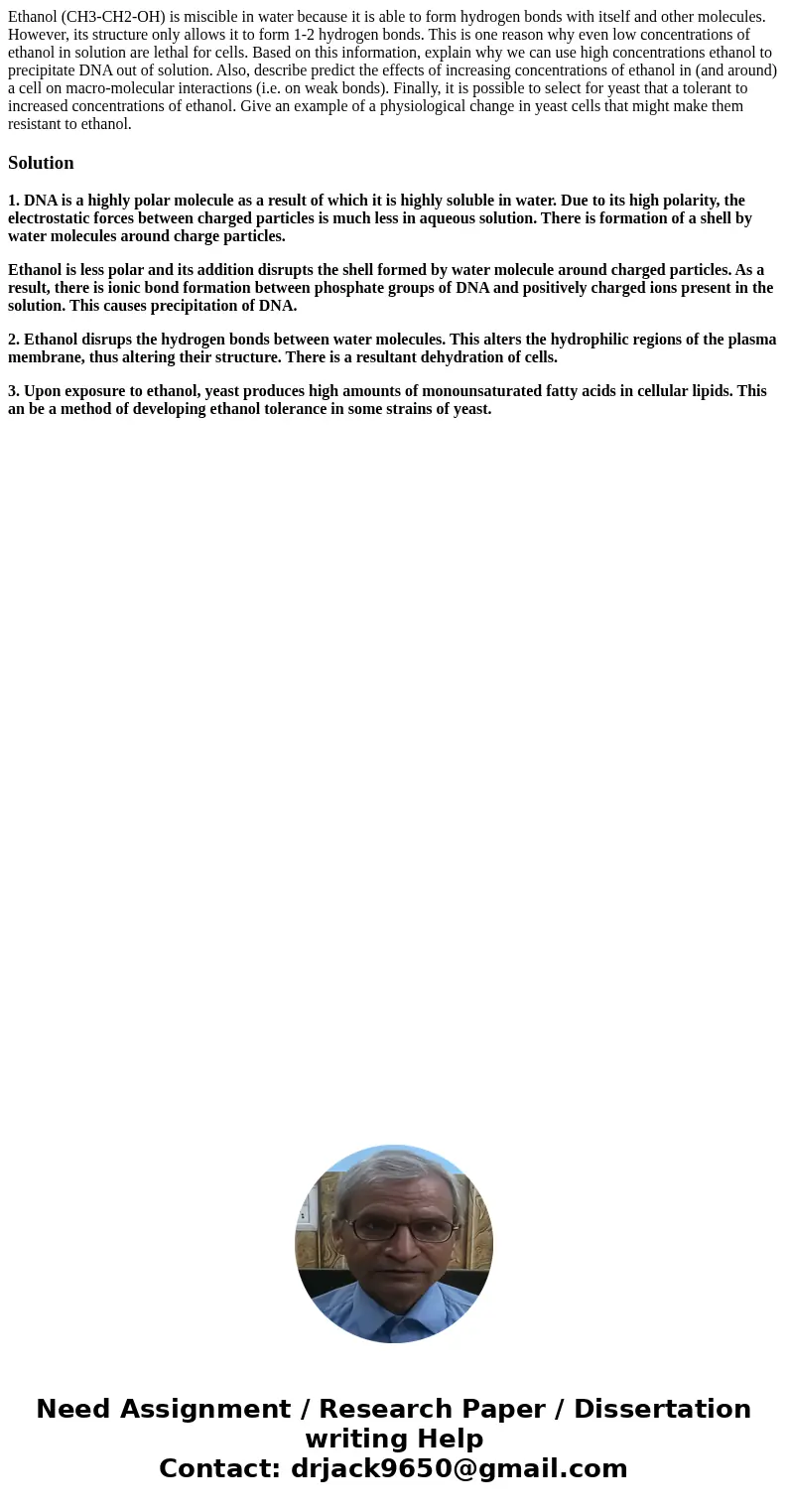Ethanol CH3CH2OH is miscible in water because it is able to
Solution
1. DNA is a highly polar molecule as a result of which it is highly soluble in water. Due to its high polarity, the electrostatic forces between charged particles is much less in aqueous solution. There is formation of a shell by water molecules around charge particles.
Ethanol is less polar and its addition disrupts the shell formed by water molecule around charged particles. As a result, there is ionic bond formation between phosphate groups of DNA and positively charged ions present in the solution. This causes precipitation of DNA.
2. Ethanol disrups the hydrogen bonds between water molecules. This alters the hydrophilic regions of the plasma membrane, thus altering their structure. There is a resultant dehydration of cells.
3. Upon exposure to ethanol, yeast produces high amounts of monounsaturated fatty acids in cellular lipids. This an be a method of developing ethanol tolerance in some strains of yeast.

 Homework Sourse
Homework Sourse